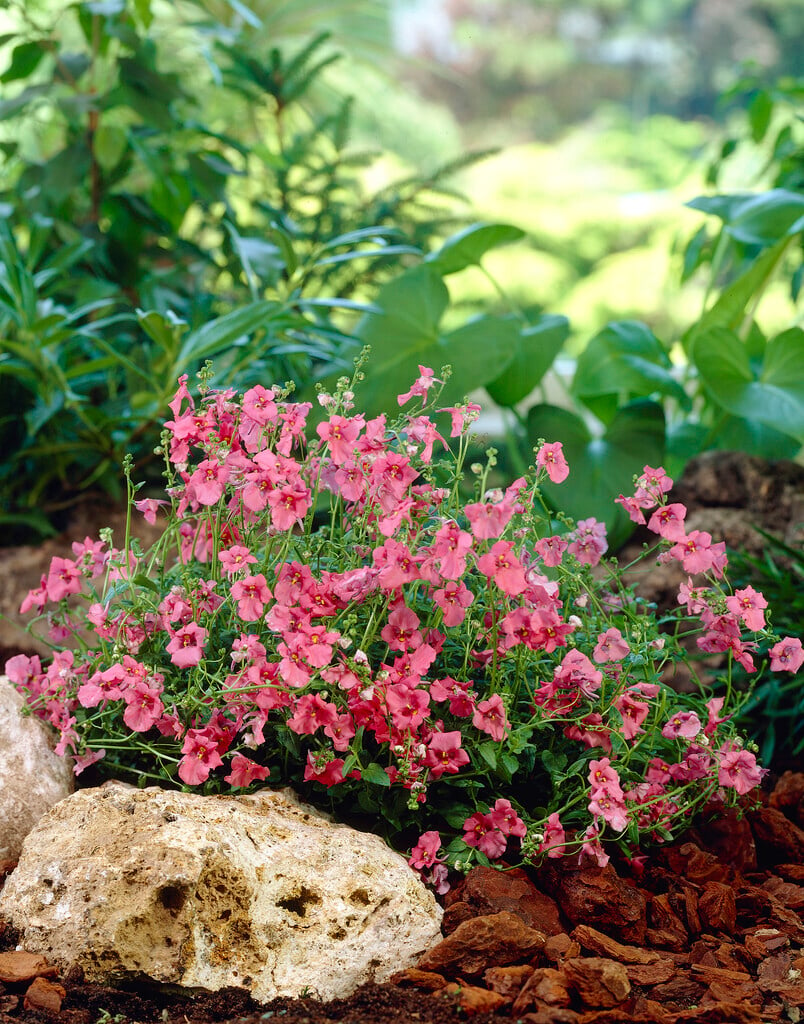Diascia fetcaniensis
A creeping perennial with oval, hairy, semi-evergreen leaves that are heart-shaped at the base. Loose spires of rose-pink flowers, with concave 'windows' and downward pointing spurs are produced from summer to early autumn. Height around 25cm (10in)
Size
Ultimate height
0.1–0.5 metresTime to ultimate height
1 yearUltimate spread
0.1–0.5 metresGrowing conditions
Moisture
Moist but well–drained, Well–drainedpH
Acid, Alkaline, NeutralColour & scent
| Stem | Flower | Foliage | Fruit | |
| Spring | Green | |||
|---|---|---|---|---|
| Summer | Pink Purple | Green | ||
| Autumn | Pink Purple | Green | ||
| Winter | Green |
Position
- Full sun
- Partial shade
Aspect
East–facing or South–facing or West–facing
Exposure
Sheltered Hardiness
H3Botanical details
- Family
- Scrophulariaceae
- Native to GB / Ireland
- No
- Foliage
- Semi evergreen
- Habit
- Clump forming
- Genus
Diascia can be annuals or semi-evergreen perennials, usually making a mat of neat foliage with racemes of cup or bell-shaped flowers, usually in shades of pink, and each with two short spurs
- Name status
Correct
- Plant range
- S Africa (Cape)
How to grow
Cultivation
Grow in fertile, moist but well-drained soil in full sun or partial shade. Water in dry periods. Provide protection from frosts.
Propagation
Propagate by seed or from softwood cuttings in spring, or semi-ripe cuttings in summer.
Suggested planting locations and garden types
- City and courtyard gardens
- Cottage and informal garden
- Patio and container plants
- Bedding
- Flower borders and beds
- Wall side borders
Pruning
No pruning required. Cut back old stems to ground level in spring.
Pests
Diseases
Generally disease-free
Get involved
The Royal Horticultural Society is the UK’s leading gardening charity. We aim to enrich everyone’s life through plants, and make the UK a greener and more beautiful place.
